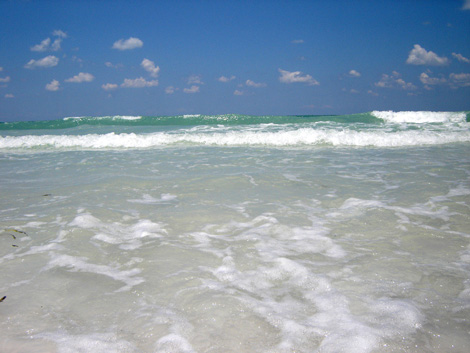Oil-Eating Microbes Clean Up BP Spill
 The oil-eating microorganism Alcanivorax borkumensis
The oil-eating microorganism Alcanivorax borkumensis
Nearly two weeks after BP capped the biggest oil spill in U.S. history, the millions of gallons that gushed into the Gulf of Mexico are disappearing, and oil is no longer washing up on the beaches and marshes along the Louisiana coast.
This reversal, which may seem surprising, can actually be explained by a number of different factors.
Some of the oil has evaporated, and high winds from two recent storms may have expedited that process.
Some of the oil has also sunk into the sediments on the ocean floor.
But a significant amount of the escaped oil has been consumed by microbes in the ocean that grow and reproduce by breaking down the hydrocarbons in oil.
 The Gulf of Mexico in 2006
The Gulf of Mexico in 2006
These microbes are located in every ocean of the world, but in the Gulf, they are especially quick at devouring oil. That’s because oil has been naturally seeping into the Gulf of Mexico long before companies like BP began drilling there.
Thus, the Gulf has bred large amounts of oil-loving microbes for a long time.
The Gulf’s warm water temperature is also a factor, as microbes grow faster in warmer waters.
The BP disaster has threatened hundreds of species that live in the Gulf islands and marshlands, and has affected thousands of individuals and families who live near the Gulf Coast.
And while humans are to blame for this catastrophe, we should be grateful that nature is capable of helping us clean our own mess.
Images: Helmholtz Centre, anne.oeldorfhirsch / Flickr
Filed under: Chemical, e-News, Environmental, Ocean
Tags: Chemical, Environmental, Ocean








